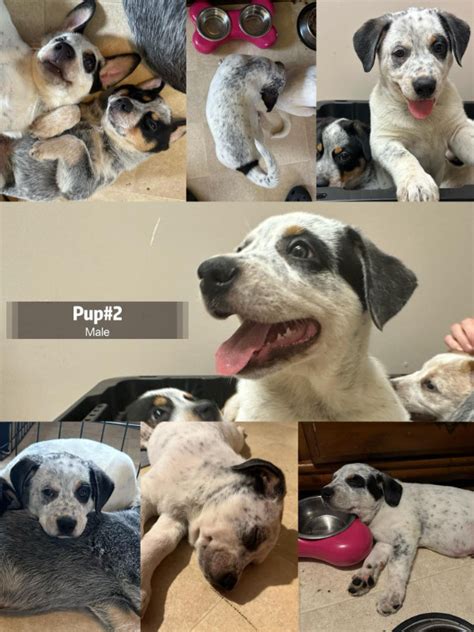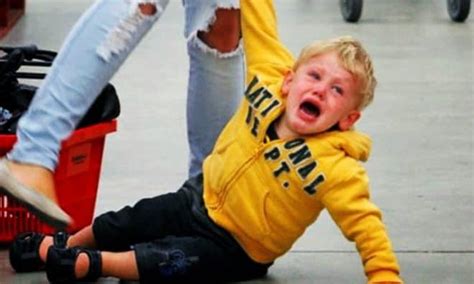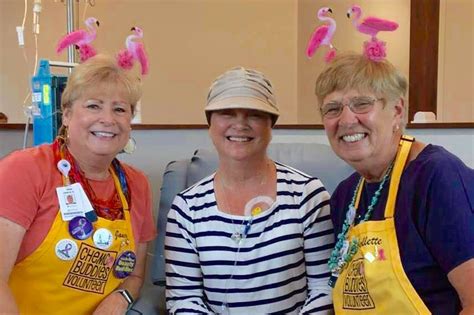
A shy Australian Shepherd who faced repeated rejection at dog parks has found a loving home after capturing hearts online. Once deemed “the dog no one wants to play with,” Bowie, a two-year-old Aussie, is now thriving with his new owner, thanks to the compassionate efforts of a rescue organization and the power of social media.
Bowie’s journey from social outcast to cherished companion began when his initial attempts to integrate into dog park dynamics were met with disinterest from other dogs. This left the sensitive Aussie feeling isolated and dejected. His demeanor, characterized by shyness and a gentle nature, seemed to be misinterpreted by his canine peers, leading to repeated instances of being ignored or avoided. Recognizing Bowie’s distress, his previous owners sought the assistance of a local rescue organization to find him a more suitable environment.
The rescue organization, aware of the challenges in finding the right match for Bowie, decided to leverage the reach of social media to share his story. A heartfelt post detailing Bowie’s experiences at the dog park and highlighting his affectionate personality quickly went viral, resonating with animal lovers around the globe. The post emphasized that Bowie wasn’t aggressive or unfriendly; he simply possessed a more reserved temperament that didn’t align with the boisterous play styles of many dog park regulars.
Among those who saw Bowie’s story was a woman who had recently lost her own Australian Shepherd and was seeking a companion animal with a calm and gentle disposition. Recognizing a kindred spirit in Bowie, she immediately reached out to the rescue organization to express her interest in adopting him. After a thorough screening process, it became clear that she was the perfect match for Bowie.
The adoption has been transformative for Bowie. In his new home, he receives the individual attention and affection he craves. His owner has created a safe and nurturing environment where he can relax and be himself without the pressure of navigating complex social interactions with other dogs. While dog parks may not be his forte, Bowie now enjoys walks in quiet parks, cuddles on the couch, and the unwavering companionship of his loving owner. His story serves as a reminder that every dog has a unique personality and deserves a home where they can thrive.
The Initial Struggles at the Dog Park
Bowie’s early experiences at the dog park were disheartening. According to the rescue organization’s account, he would often approach other dogs with a wagging tail and playful intentions, only to be met with indifference or, worse, outright rejection. This consistent pattern of social exclusion took a toll on Bowie’s confidence, causing him to become increasingly withdrawn and hesitant to interact with other dogs.
“He’s just a shy boy,” a representative from the rescue organization explained. “He wasn’t aggressive or anything like that. Other dogs just didn’t seem interested in playing with him. It was heartbreaking to watch.”
The owners at the time were concerned about Bowie’s well-being. They were struggling to provide him with the socialization he needed. The dog park, which should be a place of joy, instead became a source of anxiety for Bowie. Seeing their beloved pet’s distress, they decided to seek help from a rescue organization that specializes in finding suitable homes for dogs with unique needs.
The Role of Social Media
Recognizing that Bowie’s situation required a creative approach, the rescue organization turned to social media to amplify his story. The organization crafted a compelling narrative that highlighted Bowie’s gentle nature, his struggles at the dog park, and his need for a loving home. The post included heartwarming photos and videos of Bowie, showcasing his endearing personality and capturing the attention of a wide audience.
The social media campaign was an immediate success. Within hours, Bowie’s story had been shared thousands of times, generating an outpouring of support and expressions of interest from potential adopters. People from all over the world were touched by Bowie’s plight and eager to offer him a second chance at happiness. The post not only raised awareness about Bowie but also sparked a broader conversation about the importance of understanding and accepting dogs with different personalities and social preferences.
The viral nature of the post allowed the rescue organization to carefully vet potential adopters and select the individual who was best suited to meet Bowie’s specific needs. This targeted approach ensured that Bowie would be placed in a home where he would feel safe, loved, and understood.
Finding the Perfect Match
The woman who ultimately adopted Bowie had recently experienced the loss of her own Australian Shepherd, creating a void in her life that she was hoping to fill with another canine companion. When she came across Bowie’s story on social media, she was immediately drawn to his gentle demeanor and his obvious need for a loving home. Having owned Australian Shepherds before, she was familiar with the breed’s unique characteristics and sensitivities.
“I knew right away that I wanted to give Bowie a home,” she said. “He reminded me so much of my previous dog. I could see that he was a sweet and loving dog who just needed someone to understand him.”
After contacting the rescue organization, the woman underwent a thorough screening process, which included an interview, a home visit, and a meet-and-greet with Bowie. The rescue organization was impressed by her genuine compassion, her experience with the breed, and her commitment to providing Bowie with a stable and nurturing environment.
The meet-and-greet went exceptionally well. Bowie seemed immediately comfortable around the woman, allowing her to pet him and shower him with affection. It was clear to everyone involved that this was a perfect match. The adoption was finalized shortly thereafter, marking the beginning of a new chapter in Bowie’s life.
Life in His Forever Home
Since being adopted, Bowie has blossomed in his new home. His owner has created a calm and peaceful environment where he feels safe and secure. He enjoys leisurely walks in the park, cuddles on the couch, and the undivided attention of his loving owner.
“He’s a completely different dog now,” his owner said. “He’s much more confident and outgoing. He loves to play fetch in the backyard and snuggle up with me on the couch. He’s truly become a part of my family.”
While dog parks may not be in Bowie’s future, he has found other ways to socialize and interact with other dogs. His owner takes him on walks in quieter areas where he can meet other dogs in a more controlled and relaxed setting. He also enjoys playing with his owner’s friends’ dogs, who are carefully selected to ensure a positive and enjoyable experience for Bowie.
The Broader Implications of Bowie’s Story
Bowie’s story has resonated with animal lovers around the world, highlighting the importance of understanding and accepting dogs with different personalities and social preferences. It serves as a reminder that not all dogs thrive in the chaotic environment of a dog park and that it’s crucial to find alternative ways to meet their socialization needs.
Furthermore, Bowie’s story underscores the power of social media in connecting animals in need with loving homes. The rescue organization’s strategic use of social media played a critical role in finding Bowie his forever home and raising awareness about the challenges faced by shy and sensitive dogs.
Bowie’s journey from social outcast to cherished companion is a testament to the transformative power of love, patience, and understanding. It’s a story that inspires hope and reminds us that every dog deserves a second chance at happiness.
Detailed Analysis and Expanded Context
Bowie’s experience sheds light on several important aspects of canine behavior, socialization, and responsible pet ownership. Understanding these factors can help other dog owners provide the best possible care for their furry friends.
Understanding Canine Socialization
Socialization is a crucial aspect of a dog’s development, particularly during the critical period between 3 and 16 weeks of age. During this time, puppies are highly receptive to new experiences and learn how to interact with other dogs and people. Proper socialization helps dogs develop into well-adjusted and confident adults.
However, socialization is not a one-size-fits-all process. Each dog has a unique personality and a different capacity for social interaction. Some dogs are naturally outgoing and enjoy playing with other dogs, while others are more reserved and prefer the company of their human companions.
Dog parks can be a valuable resource for socialization, but they are not suitable for all dogs. The high-energy environment and the unpredictable behavior of other dogs can be overwhelming for shy or sensitive dogs like Bowie. In these cases, alternative forms of socialization, such as walks in quiet parks, playdates with carefully selected dogs, and training classes, may be more beneficial.
Recognizing Signs of Stress in Dogs
It’s essential for dog owners to be able to recognize the signs of stress in their pets. Dogs communicate through a variety of body language cues, including:
- Lip licking: Frequent lip licking, especially when not related to food, can be a sign of anxiety or stress.
- Yawning: Yawning, when not related to tiredness, can also indicate stress.
- Whale eye: Showing the whites of the eyes, also known as “whale eye,” can indicate that a dog is feeling uncomfortable or threatened.
- Tucked tail: A tail tucked between the legs is a clear sign of fear or anxiety.
- Panting: Panting, when not related to exercise or heat, can be a sign of stress.
- Avoidance: A dog may try to avoid eye contact or move away from a situation that is causing them stress.
If a dog exhibits any of these signs of stress at the dog park, it’s important to remove them from the situation immediately. Continuing to expose a stressed dog to the dog park can lead to long-term behavioral problems.
The Importance of Responsible Pet Ownership
Bowie’s story highlights the importance of responsible pet ownership. Responsible pet owners are committed to providing their pets with the physical, emotional, and social needs they require to thrive. This includes:
- Providing a safe and loving home: This includes providing a comfortable and secure environment where the dog feels safe and loved.
- Providing proper nutrition and exercise: This includes feeding the dog a balanced diet and providing them with regular exercise to keep them physically and mentally stimulated.
- Providing socialization and training: This includes exposing the dog to a variety of people, places, and situations and providing them with training to help them develop into well-behaved members of society.
- Seeking veterinary care: This includes taking the dog to the veterinarian for regular checkups and vaccinations.
- Being aware of the dog’s individual needs: This includes understanding the dog’s personality and temperament and providing them with the specific care and attention they need to thrive.
In Bowie’s case, his previous owners recognized that they were not able to meet his socialization needs and made the responsible decision to seek help from a rescue organization. This selfless act ultimately led to Bowie finding his forever home and living a happy and fulfilling life.
The Role of Rescue Organizations
Rescue organizations play a vital role in helping animals in need. These organizations provide temporary care for abandoned, neglected, or surrendered animals and work to find them loving homes. They also educate the public about responsible pet ownership and advocate for animal welfare.
The rescue organization that helped Bowie went above and beyond to find him the perfect home. They recognized his unique needs and used social media to reach a wider audience of potential adopters. Their dedication and compassion ultimately changed Bowie’s life for the better.
Alternative Socialization Methods for Shy Dogs
For dogs like Bowie, who may not thrive in the chaotic environment of a dog park, there are several alternative socialization methods that can be just as effective. These include:
- Leash walks: Taking your dog for regular leash walks can provide them with opportunities to meet other dogs and people in a controlled and relaxed setting.
- Playdates with known dogs: Arranging playdates with dogs that your dog is already familiar with and comfortable around can be a great way to socialize them in a safe and positive environment.
- Training classes: Enrolling your dog in training classes can provide them with opportunities to interact with other dogs and people while learning valuable obedience skills.
- Visiting dog-friendly businesses: Many businesses, such as pet stores and breweries, welcome dogs. Taking your dog to these places can provide them with opportunities to socialize in a new and stimulating environment.
- Desensitization and counter-conditioning: This involves gradually exposing your dog to stimuli that they find frightening or stressful while pairing those stimuli with positive reinforcement, such as treats or praise. This can help them learn to associate those stimuli with positive experiences and reduce their anxiety.
It’s important to remember that socialization is an ongoing process. Even if your dog is initially shy or fearful, with patience and consistent effort, you can help them become more confident and comfortable around other dogs and people.
The Impact of Bowie’s Story on Animal Welfare
Bowie’s story has had a positive impact on animal welfare by raising awareness about the importance of understanding and accepting dogs with different personalities and social preferences. It has also inspired others to consider adopting shy or sensitive dogs who may be overlooked in shelters and rescue organizations.
By sharing Bowie’s story, the rescue organization has helped to break down stereotypes about certain breeds and temperaments and has encouraged people to see each dog as an individual with unique needs and potential.
Conclusion
Bowie’s journey from a shy and rejected dog to a cherished companion is a heartwarming tale of resilience, compassion, and the transformative power of love. His story serves as a reminder that every dog deserves a second chance at happiness and that with patience, understanding, and the right support, even the most timid dogs can blossom into confident and loving members of our families. It also highlights the critical role that rescue organizations and social media play in connecting animals in need with loving homes. By understanding canine behavior, recognizing signs of stress, and embracing responsible pet ownership, we can all help to create a better world for our furry friends.
Frequently Asked Questions (FAQ)
-
Why was Bowie rejected at the dog park?
- Bowie’s rejections at the dog park stemmed from his shy and gentle nature. He wasn’t aggressive, but his reserved temperament didn’t mesh well with the boisterous play styles of the other dogs, leading to him being ignored or avoided.
-
How did social media help Bowie find a new home?
- A heartfelt post detailing Bowie’s experiences at the dog park and highlighting his affectionate personality went viral on social media. This exposure captured the attention of a wide audience, leading to numerous expressions of interest from potential adopters and ultimately connecting Bowie with his perfect match.
-
What qualities did Bowie’s new owner possess that made her a good fit?
- Bowie’s new owner had recently lost her own Australian Shepherd and was seeking a calm and gentle companion. She recognized a kindred spirit in Bowie and was experienced with the breed’s sensitivities, making her uniquely suited to provide him with the nurturing environment he needed.
-
What alternative socialization methods are available for dogs who don’t thrive at dog parks?
- Alternative socialization methods include leash walks in quiet parks, playdates with carefully selected dogs, training classes, visits to dog-friendly businesses, and desensitization/counter-conditioning techniques to help dogs become more comfortable in social situations.
-
What is the main takeaway from Bowie’s story?
- The main takeaway from Bowie’s story is that every dog has a unique personality and deserves a home where they can thrive. It highlights the importance of understanding and accepting dogs with different social preferences and underscores the transformative power of love, patience, and responsible pet ownership.









